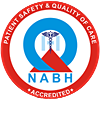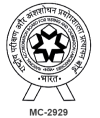Frequently Asked Questions
How do I prepare for a pulmonary function test (PFT)?
Preparing for a pulmonary function test (PFT) typically involves avoiding certain medications that may affect lung function, such as bronchodilators, for a specified period before the test. It is also advised to avoid heavy meals, smoking, and vigorous exercise for a few hours prior. Our pulmonary experts will give you specific instructions based on your medical history and the type of test being performed.
What should I bring with me to my pulmonary appointment?
When attending your pulmonary appointment, please bring a valid ID, your insurance information, and a list of any medications you are currently taking. If you have any previous lung-related test results or imaging studies, bringing those along can be helpful for our pulmonologist to review.
What happens during a bronchoscopy?
A bronchoscopy is a procedure that allows our doctors to examine your airways and lungs using a thin, flexible tube called a bronchoscope. During the procedure, you may receive a sedative to help you relax. The doctor will insert the bronchoscope through your nose or mouth into your lungs, which allows for visualization and the opportunity to take tissue samples if necessary. The entire procedure usually takes about 30 to 60 minutes.
How long does a pulmonary function test take?
A pulmonary function test (PFT) typically takes about 30 to 60 minutes to complete. The test measures how well your lungs are working by assessing various factors, such as lung volume, capacity, and airflow. It involves performing a series of breathing maneuvers while being monitored by our trained technician.
What should I expect during recovery after a bronchoscopy?
After a bronchoscopy, you will be monitored in a recovery area until the effects of the sedative wear off. It’s normal to feel a little groggy, and you may experience a sore throat or a cough. Most patients can go home the same day, but it’s important to have someone drive you, as you may not be fully alert. Your doctor will provide you with specific post-procedure care instructions and when to resume normal activities.
When can I return to normal activities after a pulmonary procedure?
The time it takes to return to normal activities after a pulmonary procedure varies based on the type of procedure performed and your individual recovery. Generally, patients are advised to rest for the remainder of the day after a bronchoscopy and can usually resume regular activities within a few days. Our doctors will give you personalized advice based on your procedure and overall health.
What are the risks associated with a bronchoscopy?
While bronchoscopy is generally considered safe, it does carry some risks, including bleeding, infection, and a reaction to sedation. There is also a small risk of a perforation in the airway or lung tissue. Our doctors will discuss these risks with you beforehand and ensure that the benefits of the procedure outweigh any potential risks based on your specific condition.
What are the benefits of pulmonary rehabilitation?
Pulmonary rehabilitation is a program designed to help patients with chronic respiratory conditions improve their lung function and quality of life. Benefits include increased physical endurance, improved breathing techniques, reduced symptoms of anxiety and depression, and enhanced overall well-being. Participants often learn about managing their condition, exercise, and nutritional strategies, leading to a more active and fulfilling life.
What is the purpose of a sleep study in pulmonology?
A sleep study, or polysomnography, is conducted to diagnose sleep-related breathing disorders, such as sleep apnea. During the study, your breathing, heart rate, and oxygen levels will be monitored while you sleep. This information helps our pulmonologist understand your sleep patterns and the potential impact of breathing difficulties on your overall health. Effective diagnosis can lead to appropriate treatment options that improve both sleep quality and daytime functioning.



